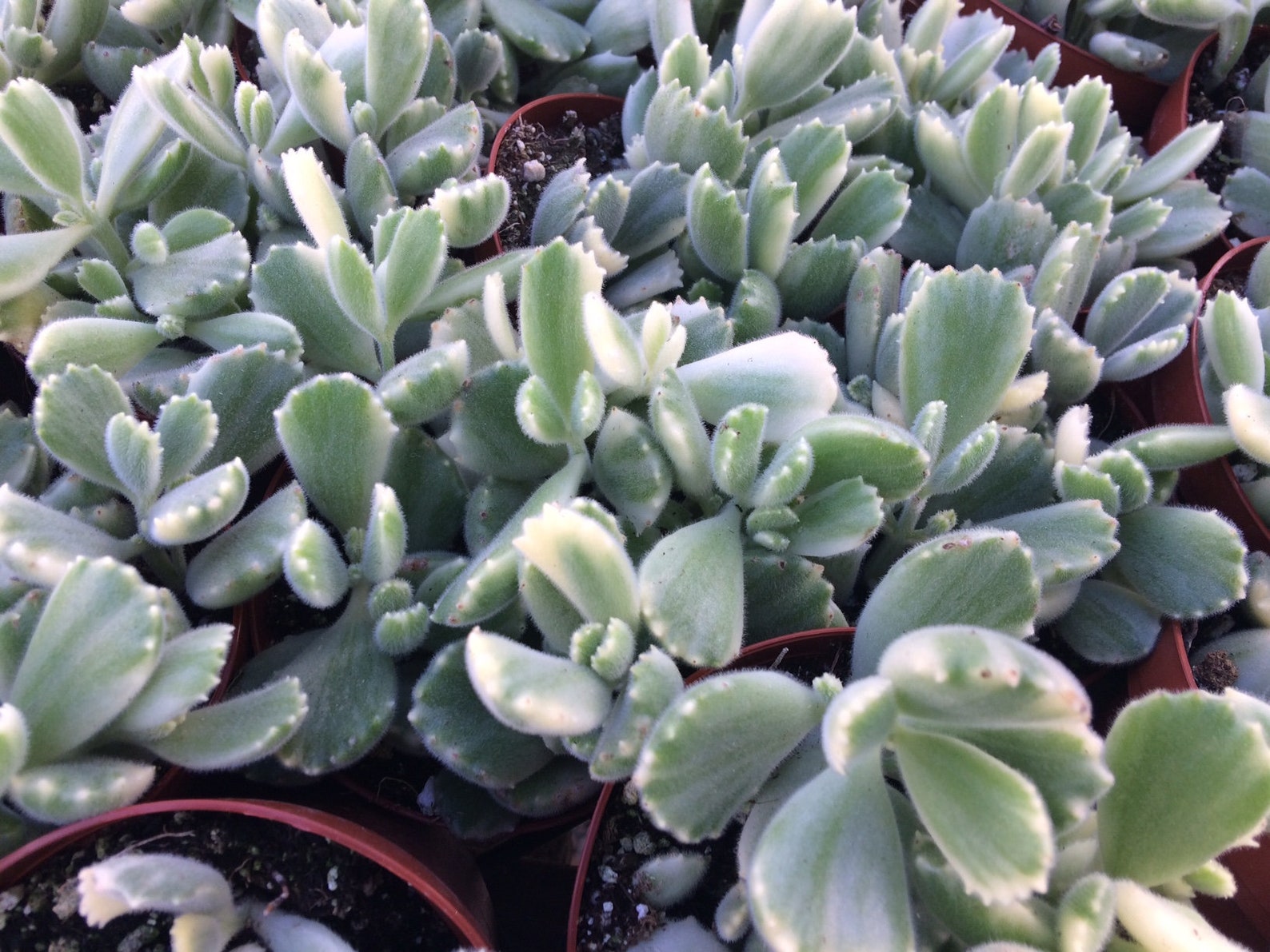

Water from the bottom by placing seedtray in a shallow container which can be filled with water or use fine spray (mist spray) to prevent disturbing and washing the seeds away. It has a peculiar thick, ovate fuzzy green leaves with prominent dark red toothed. Do not cover the seeds place them in a warm spot and keep the medium moist. Bears paw is one of the most adorable members in the succulents family. Fill the seed tray with coarse bark at the bottom of the tray (to improve drainage) and river sand on the top as medium, and water before sowing. To grow from seed, sow seed in April ( autumn). Cuttings must be placed in a warm spot with the temperature between 22 to 27 degrees Centigrade, with a good relative humidity, and the medium must be kept moist. Take cuttings about 15 cm long and remove some of the leaves (at least 2 or 3 leaves per cutting) and use a rooting hormone. If you are propagating a new plant, use seeds, which should be planted in the fall in well-draining soil. To reproduce your Bear paw succulent, you can use stem cuttings or seeds.
#BEAR PAW SUCCULENT SINGAPORE HOW TO#
Make sure that the trays and secateurs are sterilized. Bear Paw Succulent Propagation (Here’s how to do it) This is your ultimate guide to propagating Bear Paw succulent plants. Fill the seed tray with coarse bark at the bottom of the tray (to improve drainage) and river sand on top as a medium. It is easily propagated by stem cuttings. It is commonly attacked by aphids on the young shoots and inflorescence, but this is easily controlled by a pesticide application.
#BEAR PAW SUCCULENT SINGAPORE FULL#
It grows well in well-drained soil in full sun, but can also grow in semi-shaded areas. ladismithiensis is easily grown in rockeries, water-wise gardens and containers. We recommend our article about Cephalocereus senilis Care Guide (Old Man Cactus).Cotyledon tomentosa subsp. We hope you found this article on how to care for Cotyledon tomentosa useful.

It is also prone to root rot or to be affected by fungi due to excess humidity, this can be avoided by watering it properly and taking the measures we have already mentioned in the winter. The pest that most frequently attacks the Bear’s Paw is the mealybug, which is why we recommend that you regularly check its stems and under its leaves to be able to detect it in time and eliminate it. Frequent Problems in Cotyledon tomentosa: If your Bear’s Paw is small, it may take some time to bloom, as they need to grow and mature to do so. Cotyledon tomentosa Flower:Ĭotyledon tomentosa blooms from spring to summer, its flowers can be orange-red or yellow and are bell-shaped, arising on a flower stalk and protruding above the leaves. If your Bear’s Paw is very small, we advise you to allow it to grow a little more to be able to make the cuttings, in the case that it already has good size, you can cut a twig from it, let it heal, and then plant it in its new pot and wait for it to have roots, you will not have a major problem in reproducing it by this method. The propagation of the Cotyledon tomentosa can be through cuttings or by leaf, this succulent, in particular, has the fame that to reproduce it by leaf is almost impossible, what happens is that it is a little more delicate the process and it takes more than two months, then we recommend you to make it by cuttings. $8.97 Buy on Amazon How to Propagate Cotyledon tomentosa (Bear’s Paw) We must always take into account the temperature to properly care for Cotyledon tomentosa. Cotyledon tomentosa – Substrate:Ĭotyledon tomentosa is not so complicated on the subject of the substrate, just make sure it drains very well and does not retain moisture at all, in this way you will be ensuring the health of your specimens. Temperature:īeing a native plant of South Africa, its ideal climate is warm with a temperature between 68 ☏ to 86 ☏ (20☌ to 30☌), it does not tolerate frost or temperatures below 50 ☏ (10☌). Once the autumn season arrives, we must reduce the watering little by little and in winter we must avoid watering it since in that period it is more vulnerable to rot or fungal attacks. The watering that we will give it is the standard one, you have to water it when the substrate is dry and that it is a deep watering, that is to say until we see that the water comes out of the drainage holes of its pot. You can also have it indoors, just place it in an area where it receives a lot of light, the coloration of the tips of its leaves will be green if it is not very exposed to the sun, but if we get used to tolerating it the “nails” of its leaves will take a dark color giving them a better appearance of paws.

Cotyledon tomentosa is a succulent that tolerates very well the sun exposure in the mornings, in small specimens, it is necessary to adapt little by little because it can suffer from burns if we expose it to the sun and it is not acclimatized.


 0 kommentar(er)
0 kommentar(er)
